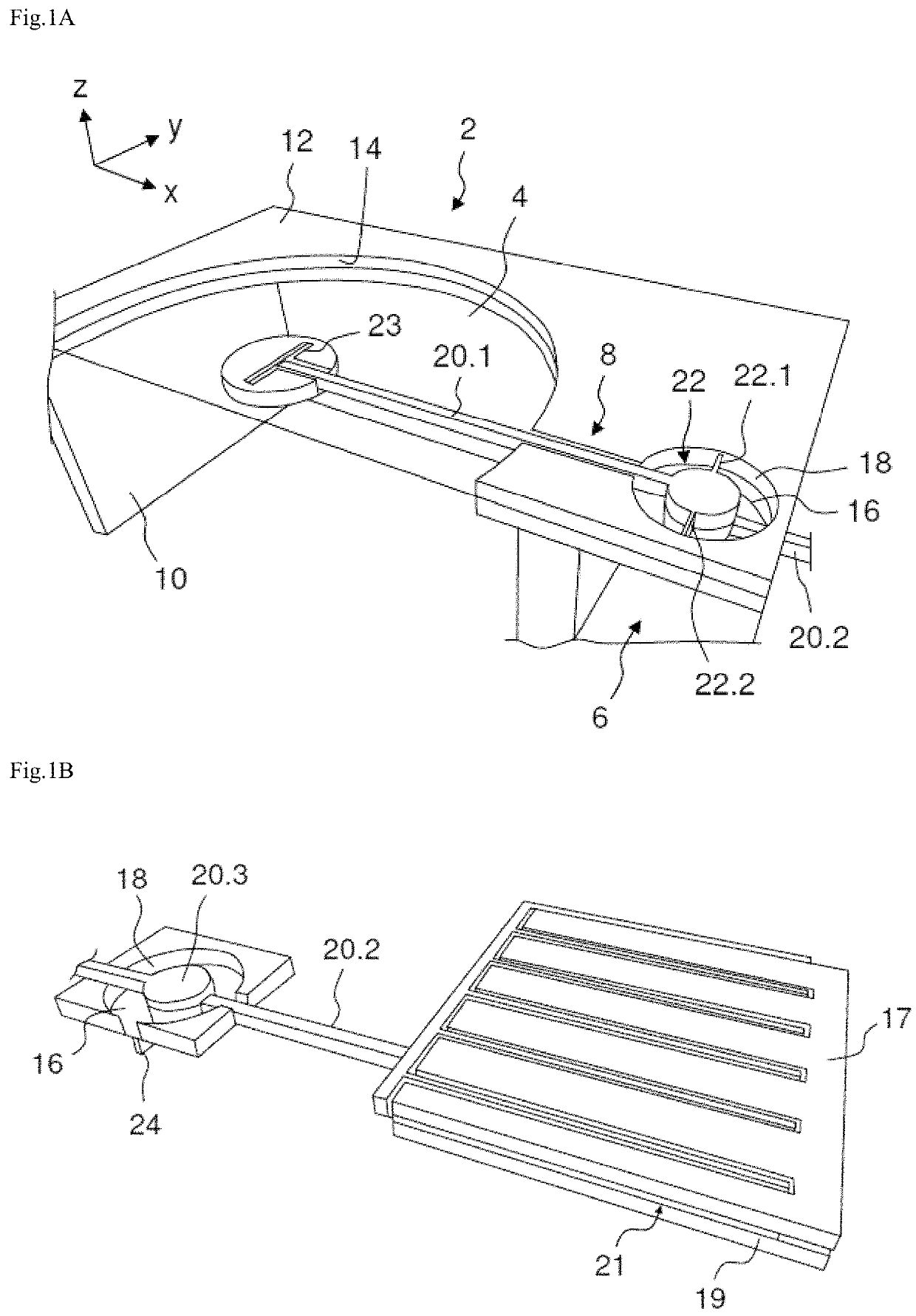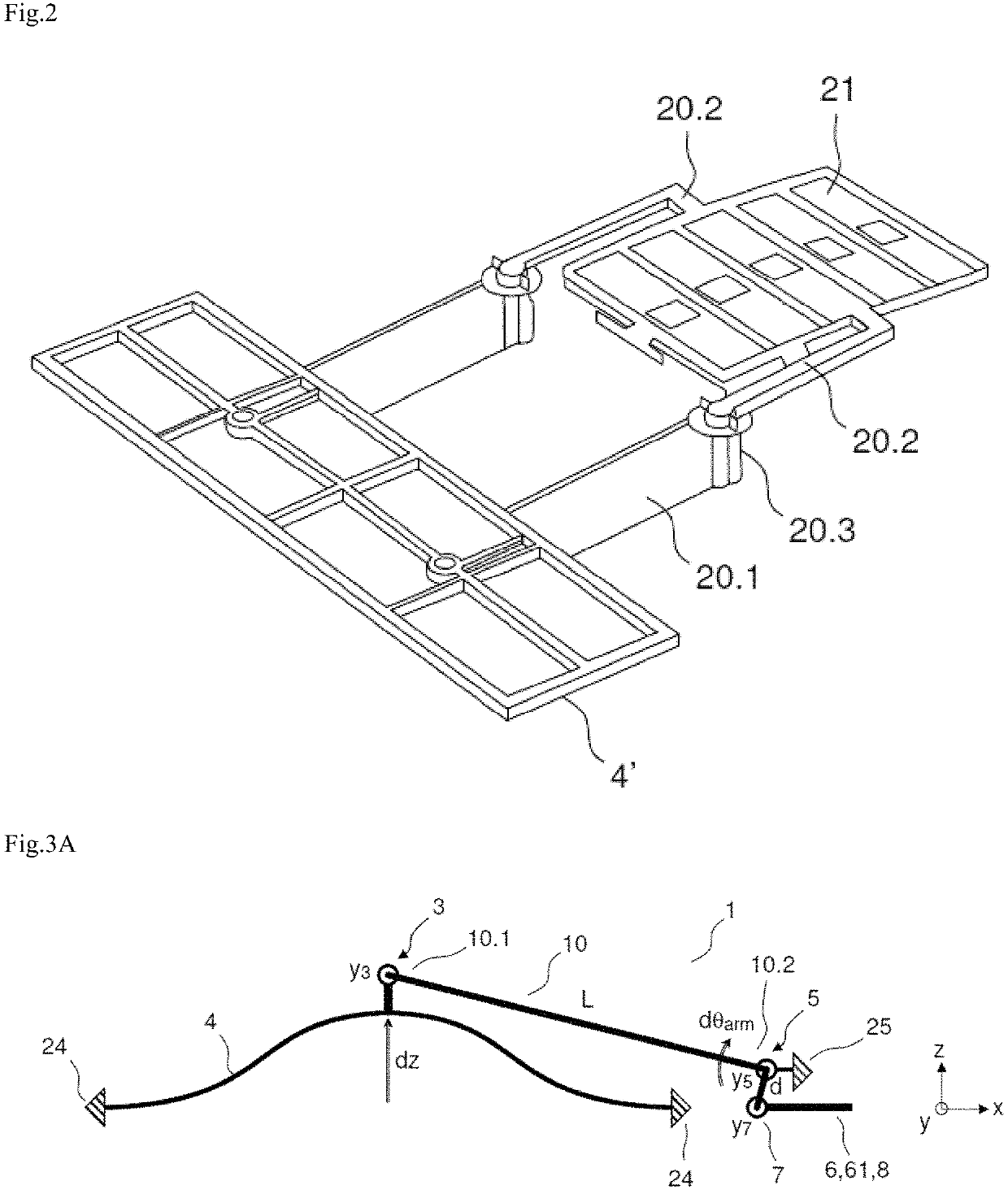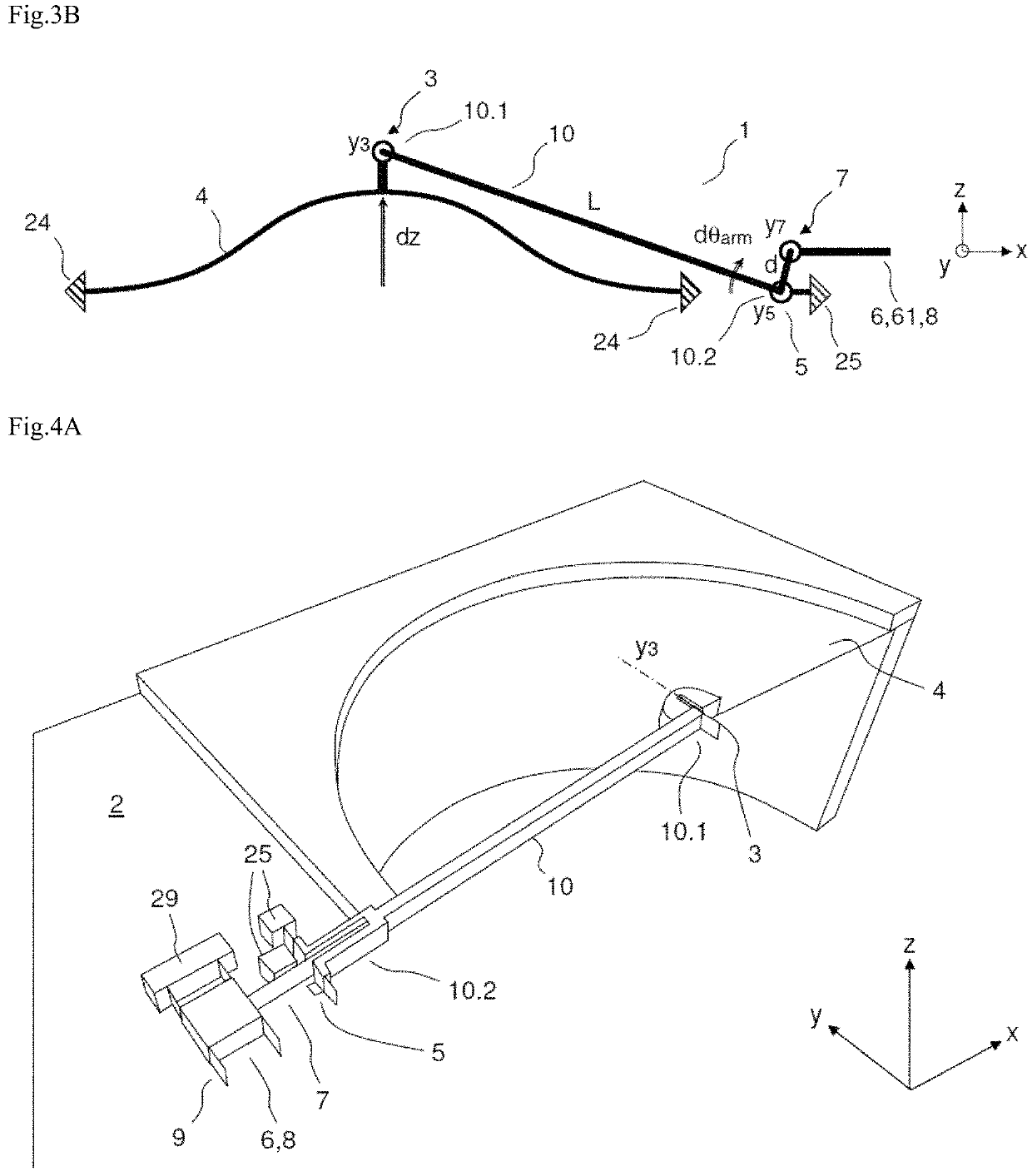Mechanical connection for a MEMS and NEMS device for measuring a variation in pressure, and device comprising such a mechanical connection
a mechanical connection and pressure variation technology, applied in the field of microphones, can solve the problems of affecting the quality of the signal before any transduction, and increasing the density and size of the holes, so as to avoid the deformation of the mobile electrode (or of the mobile electrode) and the structure, and not reducing the capacitive detection capacity
- Summary
- Abstract
- Description
- Claims
- Application Information
AI Technical Summary
Benefits of technology
Problems solved by technology
Method used
Image
Examples
first embodiment
[0087]FIGS. 4A to 4D depict various views of a MEMS-NEMS device for measuring variation in pressure according to a It might be a microphone or an absolute-pressure or differential-pressure sensor. For better legibility, certain parts, such as the anchoring blocks for example, are depicted in only half a plane. Furthermore, the grey arrows indicate the directions of coupling of the connections and the white arrows indicate the flexible directions of the connections.
[0088]In FIGS. 4A to 4D, the motion detection means 6 (for example capacitive detection means) are not depicted in detail but indicated schematically by a detection block. Even though only a certain one (or plurality) of the elements make up the detection block is mobile, namely deformable or able to be moved, it will be stated for the sake of simplification that the translational motion is transmitted to the detection block: that must therefore be understood as meaning that the translational motion is transmitted only to...
second embodiment
[0120]Detection by variation in airgap is well suited to small movements because it provides a greater variation in capacitance for a given movement. However, for large movements, it becomes nonlinear and detection by variation in surface area according to this second embodiment is then more suitable. Furthermore, when the electrode is not placed in a vacuum, the variation in airgap will be accompanied by an effect known as “squeeze film damping” which corresponds to the squeezing of the film of air between two electrodes. This phenomenon leads to a damping effect, and therefore to noise. A variation in surface area creates less mechanical noise. Finally, the nonlinear effect of the variation in airgap, firstly, can be used to obtain a negative stiffness dependent on the bias voltage, and thus to regulate the resonant frequency of the device.
[0121]Both variants of capacitive-detection block can be implemented in a MEMS-NEMS device for measuring variation in pressure according to the...
third embodiment
[0133]As an alternative to capacitive transduction, the detection block 6 may comprise a resonant beam, so as to perform detection using resonance. This alternative applies to all the embodiments, and more broadly to any MEMS-NEMS device for measuring the variation in pressure according to the invention. However, it is advantageous to perform detection by resonance in a cavity at a reduced pressure, namely for example according to the second or third embodiment described later. This is because in order to obtain a good Q factor, the viscous damping of a resonator needs to be reduced by siting it in a rarefied atmosphere.
[0134]The detection block may then comprise a resonant beam advantageously placed in a reduced-pressure cavity, the motion of the diaphragm or of the piston being converted by virtue of the mechanical connection of the invention into an in-plane translational motion which is transmitted to the resonant beam which can thus be compressed or tensioned in the plane. The ...
PUM
| Property | Measurement | Unit |
|---|---|---|
| thickness | aaaaa | aaaaa |
| thickness | aaaaa | aaaaa |
| torsion angle | aaaaa | aaaaa |
Abstract
Description
Claims
Application Information
 Login to View More
Login to View More - R&D
- Intellectual Property
- Life Sciences
- Materials
- Tech Scout
- Unparalleled Data Quality
- Higher Quality Content
- 60% Fewer Hallucinations
Browse by: Latest US Patents, China's latest patents, Technical Efficacy Thesaurus, Application Domain, Technology Topic, Popular Technical Reports.
© 2025 PatSnap. All rights reserved.Legal|Privacy policy|Modern Slavery Act Transparency Statement|Sitemap|About US| Contact US: help@patsnap.com



